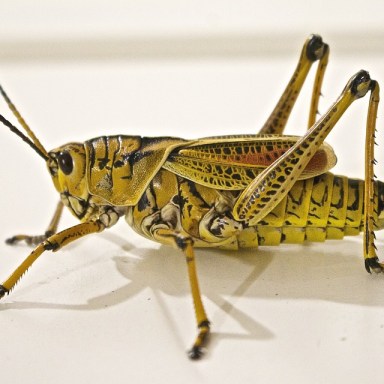Patience Grasshopper

Update February 7, 2017: Via The Ehlers-Danlos Society (aka “The EDS”) on Facebook the full new EDS nosology will be published on March 15, 2017. Meanwhile, some preliminary documents have been shared ahead of time, including one that talks about the new “framework” for recognizing and diagnosing the most common, hypermobile form of EDS.
So, lots will be changing, and thanks for your patience as I slowly get around to updating everything based on the information as it comes out.
February 18, 2017: The EDS just provided this FAQ about the pending new EDS nosology to be published March 15th, 2017. Again, patience, they want to get it out as badly and quickly as we wish to see it, I promise! (They also share our pain, I assure you.)
And follow me on Twitter and Facebook for the latest always. (See links to the right.) Thanks!
Original post from 2016:
So you all probably know the latest Annual Ehlers-Danlos Global Learning Conference under the auspices of the newly formed International Ehlers-Danlos Society (aka “The EDS” who are succeeding the EDNF of yesteryear after merging with some colleagues from the UK in May 2016) is just freshly ended (July 14-16, 2016).
And those of us who couldn’t attend are all on pins and needles awaiting the outcome from it. Especially regarding how to recognize, diagnose and classify the most common form of EDS, Hypermobile Type EDS (aka HEDS, formerly EDS III) in the absence of any clear genetic markers as I’ve mentioned numerous times.
Well, we all need to be a little more patient, as the Hypermobile committee has not yet reached a consensus on the matter, and that is actually apparently all that was shared at the conference about it. (That it’s still a work in progress, being cussed/discussed, various ideas floated around but not agreed to.) So Lara Bloom, the new British co-Executive Director of The EDS (with Shane Robinson of the former EDNF in the US) just shared this on her Facebook wall to stem the tide of inquiry they’ve gotten ever since:
“Many of you have asked when you will be able to see the work that has come out of the new International working group and symposium. The article will be published in the American Journal of Medical Genetics with the new nosology and management and care guidelines in March 2017 (date may be subject to change).
The article will be available on our website for free as soon as it is published, and a lay version will also be available.
We will release the slides and audio from the conference which is the work presented at the symposium and shows the working process we are doing to get to the article.
Be patient people – we have waited nearly twenty years for this, a few more months wont hurt… I can assure you we have over 90 people dedicated to giving us the very best chance we have so that the medical professionals actually take on these guidelines.”
In their defense, it’s a really large amorphous and heterogeneous (widely varying) animal they are trying to get their arms around, all while continuing to keep the criteria stringent enough to warrant medical attention, yet broad enough to include a majority of those truly suffering with it. (Lots, as you know I believe of course.) Never mind that we can go from seemingly benign to suddenly quite afflicted as I did so dramatically in 2012 (hey, the world didn’t come to an end – just mine as I knew it!) so it may appear you can “catch” HEDS at some point in your life if we’re not careful, despite having it since you were a zygote.
The bad news, we have to wait a bit longer. The good news, as I see it, hopefully this extra time will help them to hash out a more palatable and easily understood set of diagnostic criteria than the current Brighton/Beighton soup of confusion still leaving a majority un-diagnosed in my opinion. (Or misdiagnosed with Fibromyalgia still instead, sigh.)
Meanwhile, for those who just can’t stand to sit on their hands and let the committee finish working, I have some good news. Oregon EDS group President Heather Purdin just shared a compilation of the slides shared at the Learning Conference back in May at the 2nd and latest OR EDS Conference held Saturday October 22, 2016 at OHSU in Portland, OR which I attended. These are now available here on the OR EDS group website.
She made it clear in her talk that essentially what I said above is still true: they’ve found some more one-off mutations and types, but… the majority Hypermobile type is still being cussed and discussed by the hard working Hypermobile Working Committee as Lara Bloom stated above. I know, as I just had to gently inform my friend Dr. Bravo that no, I am not invited to attend the upcoming dinner in November 2016 as I’m not a doctor, nor invited, smile. (If only!) Stay tuned everyone, all in good time.
Not enough to tide you over? Then go back to sleep or sit on your hands or go play some Pokemon Go – carefully. (Watch where you’re going!)
Nothing worth doing is ever easy, and all good things come in time. We’ll get there. Hopefully it’ll be worth the wait.
Jandroid 3.14159265
